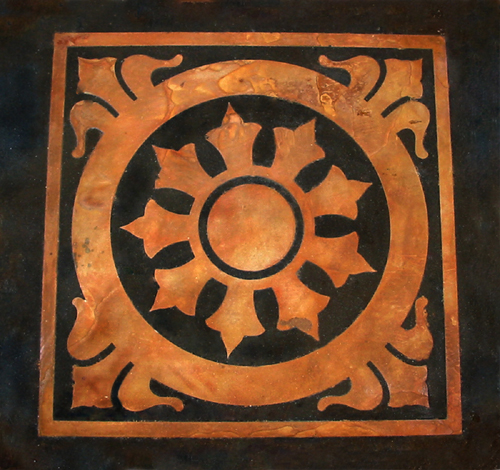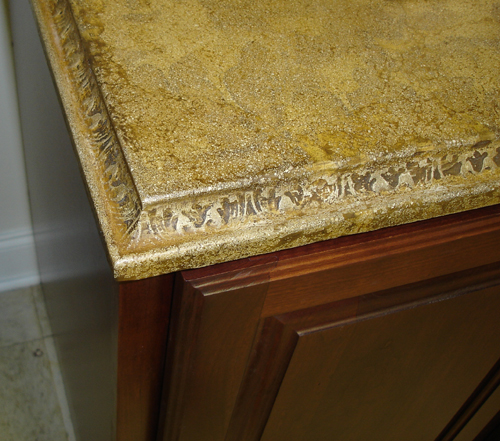Acid Stains
Acid stains are another very common and effective way to color concrete. Like integral pigments, acid stains are permanent and most can be used inside and outside. Unlike integral pigments, acid stains are applied to the concrete only after it has cured. Integral pigments are used primarily because they are uniform and predictable. Acid stains are mostly used for exactly the opposite reasons.
Acid stains are chemical solutions that react with the concrete to form color. Each different acid stain contains a particular metallic salt that reacts with the calcium hydroxide in concrete; the acid makes the reaction possible.
Acid stains are reactive; for this reason, they are somewhat unpredictable, or as some people prefer to say, more spontaneous. While the color of the acid stain won’t vary much from what’s expected, the shade and intensity will. The intensity of the color is dependent on both the concrete and the acid stain. Since the acid stain reacts with the concrete, the age, ingredients, texture, curing method and finishing method (honed versus trowelled) all have a strong influence on the final result. And the stronger the acid stain solution (the less dilute it is) and the longer it is allowed to react with the concrete, the more intense the color will be. So the end result is a beautiful mottling of shades and intensities, where the exact end result cannot be predicted.
Acid stains come in a limited (but popular) range of colors. Browns, rusty reds, orangey-browns, bluish-greens and yellow-greens typify the colors commonly available. While the colors are generally the same or similar from manufacture to manufacturer, the strength of the acid may vary, and this influences the color. Acid stains are slightly translucent. The finished color is dependent on both the color of the acid stain and the color of the underlying concrete.
Acid stains form the color on the surface of the concrete. Smooth, dense, high quality concrete, which is very typical in concrete countertops, is not very porous. Acid stain color does not penetrate very far into the concrete. Typically it is only a few thousandths of an inch deep. Because of this the color can be worn off from prolonged abrasion, so some sort of sealer generally applied over the stain to protect it. This is more often a concern with floors than with countertops.
It is possible to mix some acid stains together, and it is possible to apply one color over the top of another acid stain. And acid stains can be applied over integrally pigmented concrete. This is a good method for getting the best of both worlds: achieving a particular color and overall evenness of tone but capturing some of the unpredictable mottling too.
Since acid stains are applied to cured concrete before it is sealed, only a small amount is needed to color a large amount of concrete. Typically a gallon of acid stain costs about $50 to $70, but will color several hundred square feet of concrete. This makes them very economical.
However, the skill involved in applying acid stains and knowing what effects will be achieved does not come cheap. It requires a great deal of experience and attention to detail. A craftsman who has experience in acid stained concrete floors is often a good candidate to apply his or her skill to acid staining concrete countertops. The Decorative Concrete Institute offers expertise and training in acid staining, as well as Bob Harris Guides.
Acid staining is also a popular technique in conjunction with stencils. Stains can be applied before and/or after stenciling to achieve a variety of effects.

Brown over copper with Modello stencil

Traditional look achieved with amber acid stain and floral edge
Read next: Part 3: Dyes
